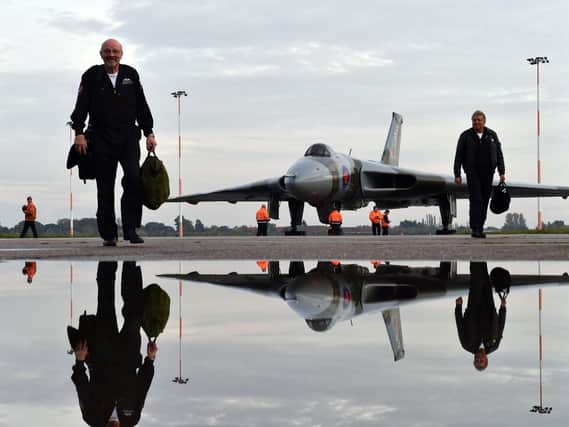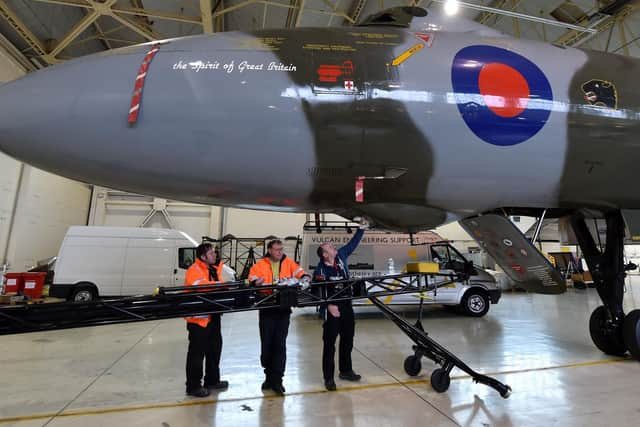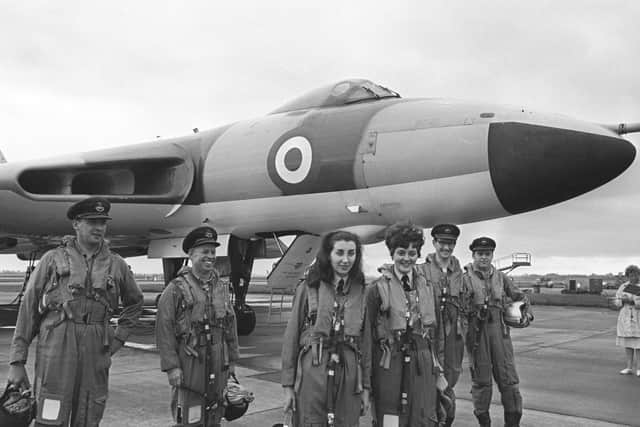Last flying Vulcan celebrates diamond anniversary


Now the last airworthy Vulcan bomber, which has her final home in South Yorkshire, is marking a diamond anniversary.
May 25 1960, 60 years ago today, saw the first test flight of XH558, exactly 14 months after work started on her.
Advertisement
Hide AdAdvertisement
Hide AdNow at home at The Vulcan to the Sky Trust in Doncaster, XH558 was the last of the Vulcan bombers to stop flying, after a lack of engineering expertise meant she was forcibly grounded in October 2015.


Dr Robert Pleming, who leads The Vulcan to the Sky Trust, said: “This year marks two significant diamond anniversaries for XH558 - this month we celebrate 60 years since her first test flight and in July we will celebrate 60 years since she became the first Vulcan B Mk2 to enter RAF service when she joined the No.230 Operational Conversion Unit at RAF Waddington.
“Sadly we don’t know for certain who piloted XH558 for her test flight but we’re convinced that it would have been Jimmy Harrison, Avro’s Chief Test Pilot, who flew her, with Flight Test
Engineer Bob Pogson as AEO, but unfortunately no formal record of the flight appears to exist.
Advertisement
Hide AdAdvertisement
Hide Ad“It is important for us to commemorate these significant anniversaries and recognise the important role that the Vulcan bombers played in our history.”


Vulcan bombers carried Britain’s strategic nuclear deterrent during much of the Cold War. While the fleet’s operational service ceased in 1984, XH558 flew on in the display role until finally retiring from RAF service in 1993.
In 1997, Dr Pleming and a small team started to investigate the possibility of returning her to flight.
Ten years and £7m later, in a triumph of British engineering and determination, she made her first post-restoration test flight in October 2007. XH558 flew for eight further display seasons, to an estimated 20m people across the UK.
Advertisement
Hide AdAdvertisement
Hide AdIn 2010, the inscription ‘The Spirit of Great Britain’ was added to her livery, and now the Trust is inviting people to have their names placed on her wing for £30 and “become part of her history”. It is also working to build a dedicated hanger space at its visitor centre.
Dr Pleming said: “We are working on developing our plans to build a new hangar for XH558 where supporters can admire this magnificent aircraft close up once again, can hear about her story, and where we can excite and inspire youngsters in aviation and engineering.
“When XH558’s supporters had the opportunity to see the aircraft, more than 1000 people visited each month. We want to give people that opportunity again and her own dedicated hangar space will enable us to do this.”
Visit www.vulcantothesky.org for more information on how to add your name.
Final flight
Advertisement
Hide AdAdvertisement
Hide AdIt was with a traditional salute that XH558 returned to ground at Doncaster Sheffield airport after her final flight in October 2015.At the controls was pilot Martin Withers, who led the first of the raids on the Falklands by the Vulcans in 1982 - the only time the aircraft ever dropped bombs in anger.
He told the Yorkshire Post then it was the Vulcan’s combination of “grace and beauty” along with its sense of power that made it special.